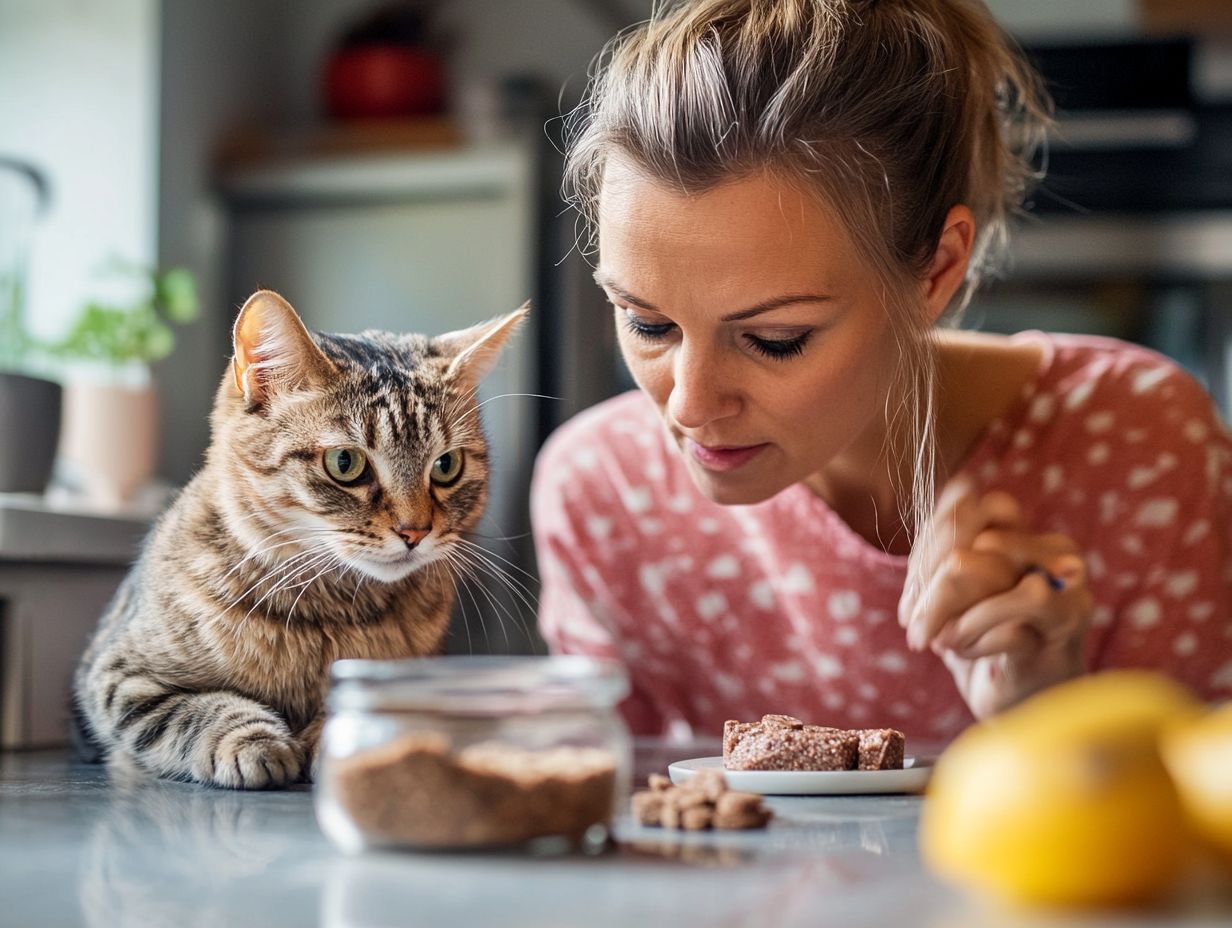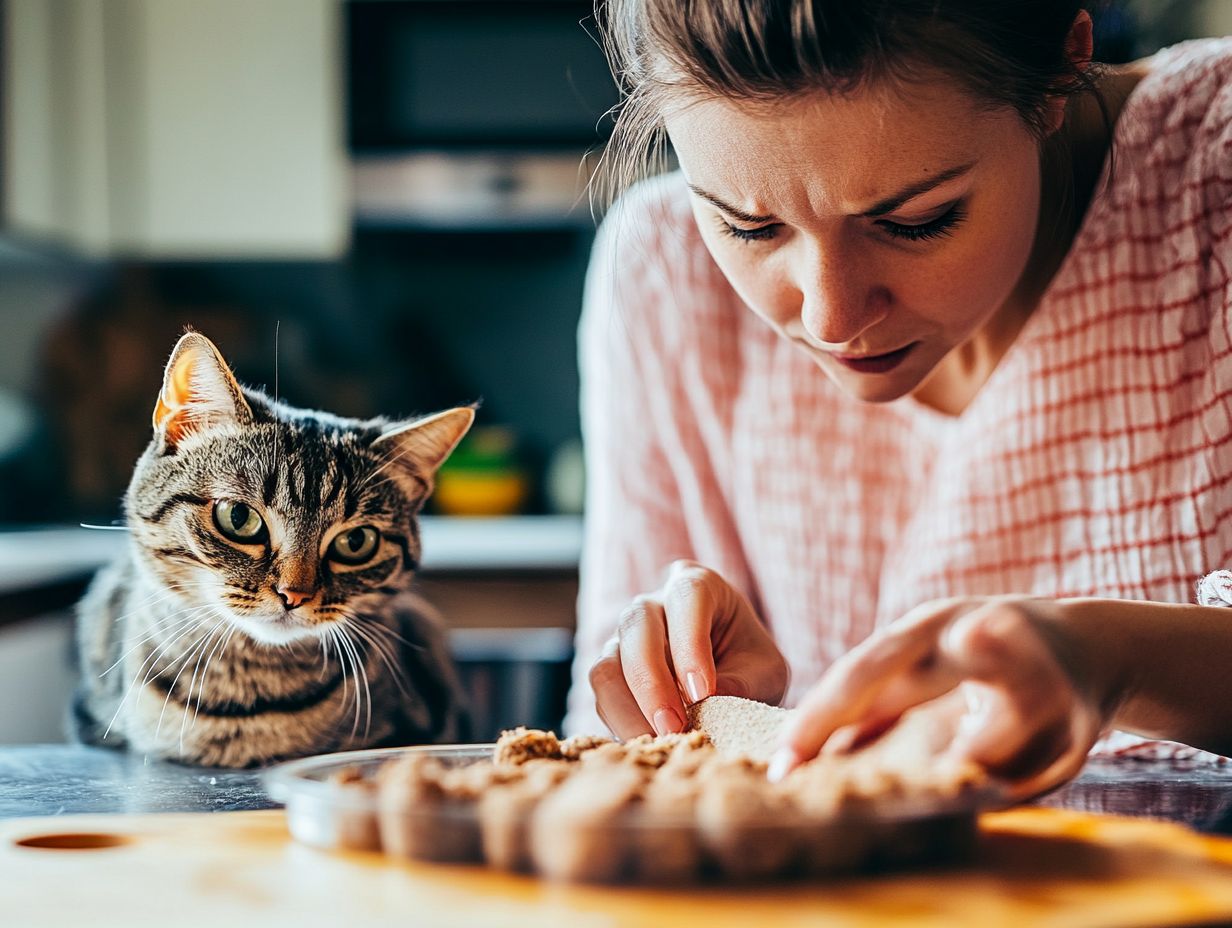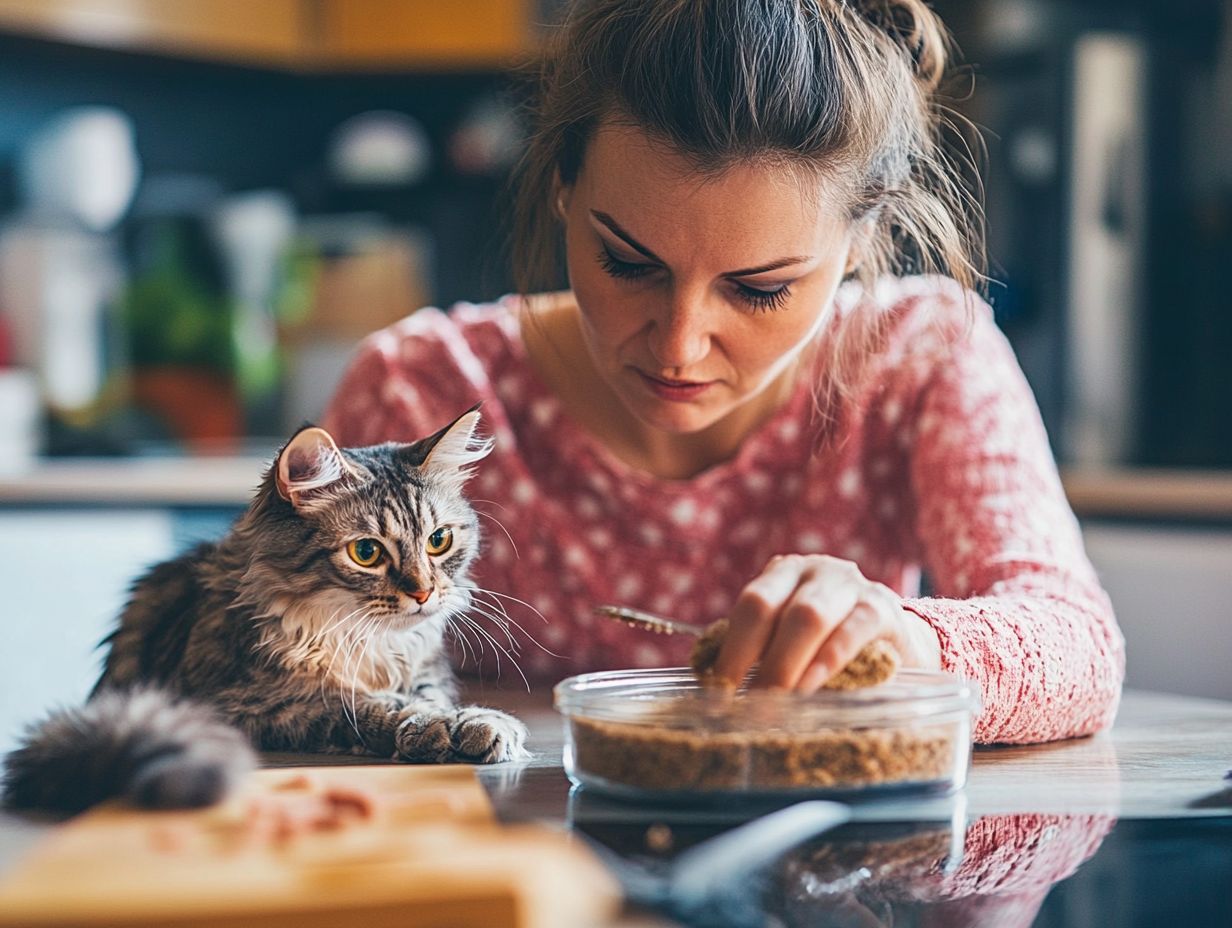As more pet owners explore alternative diets for their feline friends, raw cat food has emerged as a popular choice in raw pet food products. However, it’s essential to fact-check the nutritional claims associated with raw feeding to ensure informed decisions. Advocates argue it offers health benefits and aligns closely with a cat’s natural dietary instincts. Yet, it is important to emphasize that while some cats may experience improved nutrient absorption, these claims should be backed by peer-reviewed studies and veterinary sources to substantiate their validity. For instance, studies published in journals such as the Journal of Animal Physiology and Animal Nutrition highlight these benefits in detail.
Feeding cats raw food isn’t without its risks, including potential bacterial contamination from pathogens such as Salmonella and E. coli, nutritional imbalances, and health and safety concerns that can affect both cat and human health. A thorough discussion of these risks is essential. This discussion will examine the reasons behind the raw food trend, the risks involved, how to mitigate those dangers—including the role of veterinary professionals—and alternative feeding options to consider. Consultation with a veterinary professional is crucial when considering a raw diet to ensure safety and health.
Key Takeaways:

- Raw cat food can provide health benefits but also carries risks such as bacterial contamination, nutritional imbalances, and zoonotic risk due to pathogenic microorganisms.
- These risks can be mitigated by proper handling and storage, balanced diets that meet AAFCO standards, grinding bones and vegetables, supplementing with vitamins and minerals, and adhering to veterinary guidelines.
- Alternatives to raw cat food include high-quality commercial pet food, homemade cooked food, and consultation with a veterinary nutritionist for a balanced and safe diet.
What Is Raw Cat Food?
Raw cat food is a type of diet that consists of uncooked meat, organs, and bones, designed to mimic a cat’s natural dietary habits. It is often promoted as a feeding method with potential health benefits. However, anecdotal evidence from pet owners should not replace scientifically backed research and veterinary advice. For comprehensive understanding, refer to publications like Veterinary Clinics of North America.
Proponents of raw feeding argue that this diet provides a nutritionally balanced meal rich in protein and essential fatty acids, which can enhance pet health by improving nutrient absorption and gastrointestinal function. However, the raw feeding method also raises various health and safety concerns, particularly regarding bacterial contamination and food safety. It is crucial for cat owners to monitor for signs of adverse reactions when introducing new food items, especially with raw diets.
Therefore, both the veterinary profession and pet owners must be informed about proper food handling practices—including identifying spoilage and safe food preparation—and parasite management to mitigate the risks associated with this feeding approach.
Why Do Some People Choose to Feed Their Cats Raw Food?
Pet owners choose to feed their cats raw food for various reasons, including the perceived health benefits for their cats, the desire to more closely replicate their natural diet, and the intention to avoid fillers and additives commonly found in many commercial pet food products from pet food manufacturers. However, it is important to understand the special dietary needs of different life stages—such as kittens, pregnant or nursing cats, and seniors—as these needs impact raw feeding significantly.
Proponents argue that a raw diet leads to higher energy levels, shinier coats, and improved overall health outcomes, thereby positively impacting the nutritional adequacy of their pets by providing a more natural source of nutrients and promoting dietary diversity. However, individual results may vary, and not all cats will experience the same health outcomes from a raw diet.
1. Belief in Health Benefits
The health benefits of raw feeding are attributed to the use of uncooked, natural ingredients, which are believed to enhance pet health through improved nutrient absorption and overall nutritional balance. As a result, raw diets are thought to contribute to softer fur, increased energy levels, and the ability to achieve and maintain a healthy body weight.
Research indicates that pets on raw diets generally experience lower incidences of skin allergies and gastrointestinal issues. Veterinarians have noted significant improvements in their patients after transitioning to raw feeding. However, it’s important to note that these claims should be substantiated by scientific research, and testimonials from pet owners offer anecdotal evidence of more energetic pets with fewer health problems.
2. Mimicking a Cat’s Natural Diet
One of the main principles of raw feeding is to mimic a cat’s natural diet, which consists predominantly of raw meat, organs, and a diverse range of food items. This approach is believed to satisfy a cat’s evolutionary dietary requirements. When considering raw feeding, it is crucial to understand specific nutritional guidelines to ensure a balanced diet, particularly concerning supplements and correct dosages to avoid over-supplementation. Additionally, considerations for various life stages—kittens, pregnant or nursing cats, and senior cats—should be taken into account to meet their unique nutritional needs.
Finally, ethical and sustainability concerns surrounding raw diets should be briefly discussed while maintaining the focus on the cat’s health and nutritional needs. It is essential for cat owners to consult with a veterinarian before making any dietary changes to ensure that their pets receive appropriate nutrition.
What Are the Potential Risks of Feeding Cats Raw Food?

One of the most concerning drawbacks of feeding cats raw food is the potential for bacterial contamination and the presence of pathogenic microorganisms, which can lead to severe health risks.
Foodborne pathogens such as Salmonella, Escherichia coli, and Campylobacter can not only harm feline health but also pose zoonotic risks to owners and other household members. Therefore, it is crucial for cat owners to understand safe handling practices and their responsibility in mitigating these risks.
1. Bacterial Contamination
Bacterial contamination is one of the most significant risks associated with feeding raw meat to cats. Pathogens such as Campylobacter, Salmonella, and Escherichia coli can thrive in raw meat products, posing a serious threat to both pets and their owners. To mitigate these risks, it is essential to implement strong food safety practices. Pet owners should maintain appropriate refrigeration temperatures, such as keeping raw food between 32°F and 40°F.
- Thoroughly wash hands and surfaces after handling raw meat,
- Store meat products in sealed containers,
- Avoid the use of shared utensils, and
- Consider regular PCR testing for parasitic risk.
Being informed and aware of the dangers of raw diets can help pet owners ensure the safety of their pets while also promoting a healthier and cleaner home environment.
2. Nutritional Imbalances
One of the potential risks associated with raw diets is the nutritional imbalances that can occur if these diets are not carefully formulated and monitored by professionals. Cat owners interested in raw feeding should collaborate with a veterinary nutritionist to create a balanced diet that meets their cat’s individual nutritional needs and prevents deficiencies. It’s vital to note that certain dietary conditions, such as kidney disease or diabetes, require specialized diets.
While some cat owners may believe that raw feeding is a more natural alternative for their cats, it often overlooks essential components such as vitamins, minerals, and essential fatty acids that cats cannot synthesize themselves. For instance, a raw diet primarily consisting of muscle meat may lack calcium and phosphorus, and the absence of organ meats can lead to deficiencies in vitamin A and other vital nutrients.
3. Bones and Choking Hazards
Feeding raw bones to cats can pose choking hazards and potential health risks. It is essential to select raw bones that are large enough to prevent choking and to avoid small or cooked bones, as these can easily splinter. Regular checkups with a veterinarian are important to ensure that any dietary changes are suitable for the pet’s specific health needs, monitor for any adverse reactions, and check for nutritional deficiencies.
How Can the Risks of Raw Cat Food Be Mitigated?
Mitigating the risks associated with raw food diets is essential for ensuring both the health and safety of household pets and protecting pet owners from potential zoonotic risks. Employing prevention methods, such as proper food handling practices and adherence to veterinary guidelines, can significantly reduce the likelihood of foodborne illnesses, nutritional deficiencies, and parasitic infections.
1. Proper Handling and Storage
Proper handling and storage of raw pet food are crucial for preventing food contamination. Pet owners should always store raw food in sealed containers to prevent cross-contamination with other kitchen items and understand how to detect spoilage, such as changes in smell or texture.
2. Balanced and Complete Diets

A balanced and complete raw food diet for cats is essential to ensure adequate nutrition and prevent deficiencies. Collaborating with a veterinary nutritionist ensures proper nutritional adequacy and helps tailor diets to meet specific health concerns.
3. Supplementing with Vitamins and Minerals
Supplementing with vitamins and minerals is crucial for those feeding raw diets. It is important to consult with veterinary professionals before adding any supplements to avoid toxicity or imbalances. Regular PCR testing and parasite screening should also be conducted under veterinary guidance.
What Are the Alternatives to Raw Cat Food?
High-quality commercial cat food and homemade cooked cat food are the best alternatives to raw cat food, offering balanced nutrition while minimizing health risks. Specific examples of safe handling and storage of cat food include keeping food sealed, refrigerating leftovers promptly, and discarding expired products.
1. High-Quality Commercial Cat Food
High-quality commercial cat food is specifically designed to meet the nutritional needs of felines, ensuring both nutritional adequacy and safety for pets. Pet owners should look for products compliant with AAFCO standards.
2. Homemade Cooked Cat Food
Homemade cooked cat food can serve as a nutritious alternative to raw diets. With careful planning and collaboration with veterinary professionals, it is possible to create balanced meals for cats.
3. Consultation with a Veterinary Nutritionist

Veterinary nutritionists are valuable resources for pet owners seeking guidance on cat nutrition, offering evidence-based dietary recommendations to promote optimal health.
Frequently Asked Questions
What are the potential risks associated with feeding raw cat food?
There are several potential risks associated with feeding raw cat food, including bacterial contamination, nutrient deficiencies, and choking hazards. Additionally, risks include zoonotic risk from pathogens.
How can bacterial contamination and parasitic risk be a danger in raw cat food?
Raw cat food can contain harmful bacteria that can cause food poisoning and other health issues in cats.
What are some ways to mitigate the risk of bacterial contamination and parasitic infections in raw cat food?
To mitigate the risk, it is important to handle raw cat food safely and to source it from reputable suppliers.
Can feeding raw cat food lead to nutrient deficiencies in cats?
If not properly formulated and balanced, raw cat food may lack essential nutrients that are necessary for a cat’s health.
How can I ensure my cat is getting all the necessary nutrients from a raw food diet?
To ensure your cat is getting all necessary nutrients, consult with veterinary professionals to ensure the diet is properly balanced.
Are there any health and safety concerns or choking hazards associated with feeding raw cat food?
Yes, feeding whole bones or large chunks of raw meat can pose choking hazards to cats. It is important to properly portion and prepare raw cat food.
Lastly, consider ethical and sustainability concerns regarding meat sourcing while reiterating that a cat’s health must remain the priority.